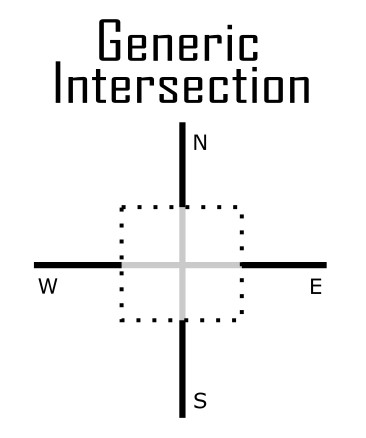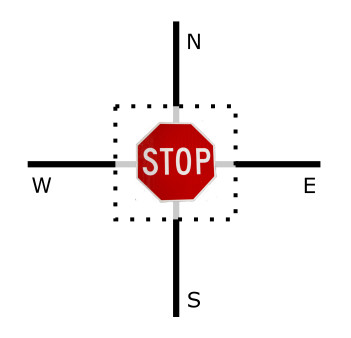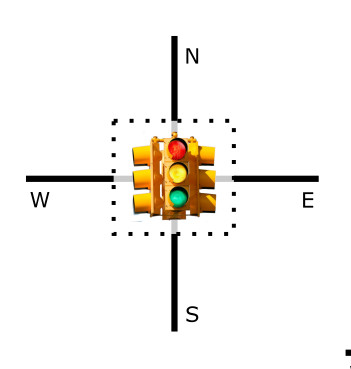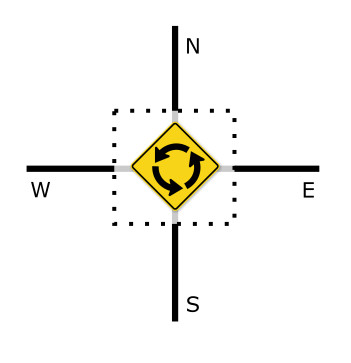I kind of got mugged the other night. It was in a store parking lot. I was sitting there, minding my own business, when a little old lady with a handicap tag hanging from her mirror accosted me and forced me to pay $60.
That is, in effect, what happened. What happened, in fact, was that she drove her car into mine and caused about $60 worth of damage to my car. End result is the same though, albeit with less personal danger and more work after the fact.
Here’s the story: I was pulling into the Meijer parking lot and the entering traffic (me) does not have a stop sign, whereas the cross traffic (little old lady, or LOL for short) does. She is going to turn left to leave the parking lot, and starts to do so in front of me. I’m going slow, as I’m anticipating the cross traffic not realizing I don’t have a stop sign, so I’m able to stop before getting to the lady. Note that I wanted to turn right, so I wouldn’t have crossed her path anyway.
So why did I stop instead of turning right? Because she was taking up more than her lane and I didn’t think I had enough room to get through until she left.
But while I’m stopped, waiting for her to complete her turn, she keeps getting closer. I have my foot firmly on the brake, wondering why the gap between us is closing. Then there is a scraping, crunching sound, and I’m wondering why she isn’t stopping, because I can’t go anywhere. Finally she stops and so do the sounds.
Now I notice there’s a truck behind me, so she pulls up to the far curb, and I go around the curb and park in the closest spot. I get out, notice that my bumper is crunched up but the lights seem to still work, then I walk over to her car. She tries to open the door but her sheet metal is deformed just enough that she can’t budge it.
If you want more details of the story you can ask me later, but the end of the story is that since it happened on private property we are free to exchange information and go our separate ways. Since all I got out of it was a dented bumper and a cracked headlight housing, I was glad for that. I ordered the $60 replacement housing and will try to undent the plastic bumper somewhat, but I’m sure the long-term effect will be a slightly uglier vehicle.
Her car, on the other hand, scraped the paint off three separate body panels (front quarter panel, driver door, rear door) and deformed them enough to effect the door hinge operation. Her three seconds of inattention cost her thousands of dollars of damage.
And I must take this time to reflect on my previous accident, less than a year ago. This was on a snowy road. I was on the main road and did not have a stop sign, and the lady (middle-aged lady, or MAL for short) on the side road and who did have a stop sign had trouble stopping and slid into the intersection, right in front of my vehicle. She tried to accelerate and I tried to stop, but it was too close and I ended up bumping her. That bump caused her to go into the ditch, which caused her airbags to go off. All I got out of it was a cracked bumper and cracked headlight housing, so I was glad for that.
Her car, on the other hand, had the airbags go off and required a tow out of the ditch, with police oversight. Her three seconds of late braking cost her thousands of dollars of damage.
On one hand, I hope not to be in anymore car crashes. One the other hand, if I am in a crash I hope it keeps up the trend of not costing me any more than some tens of dollars and a half hour to replace a headlight housing.
When he raises himself up, the mighty fear; Because of the crashing they are bewildered.
Job 41:25

 This is Alpha, the first-born, when he was 2YO.
This is Alpha, the first-born, when he was 2YO. This is Beta, the second-born, when he was about 2YO.
This is Beta, the second-born, when he was about 2YO. This is Gamma, the third-born, when he was about 18MO.
This is Gamma, the third-born, when he was about 18MO.





